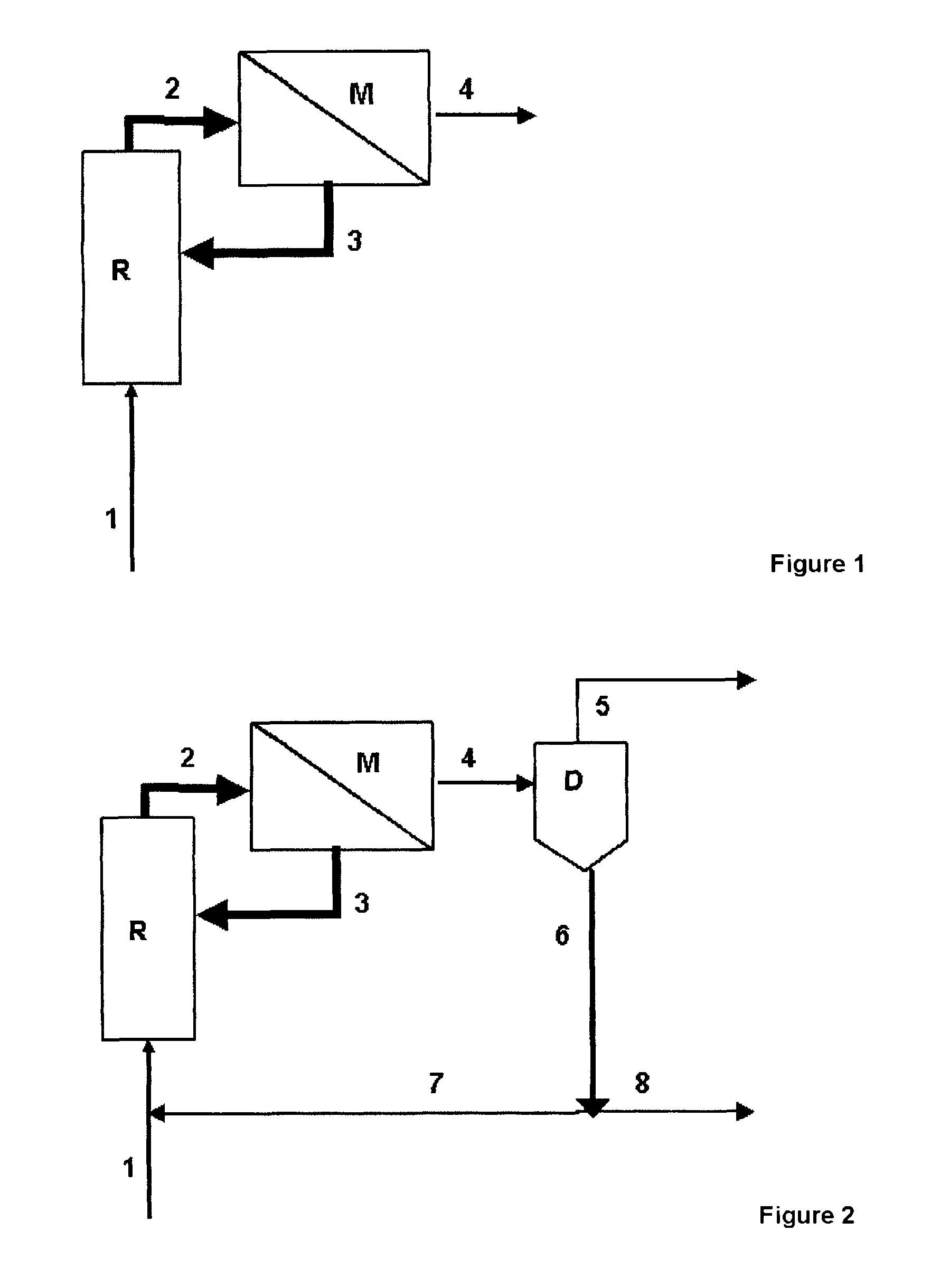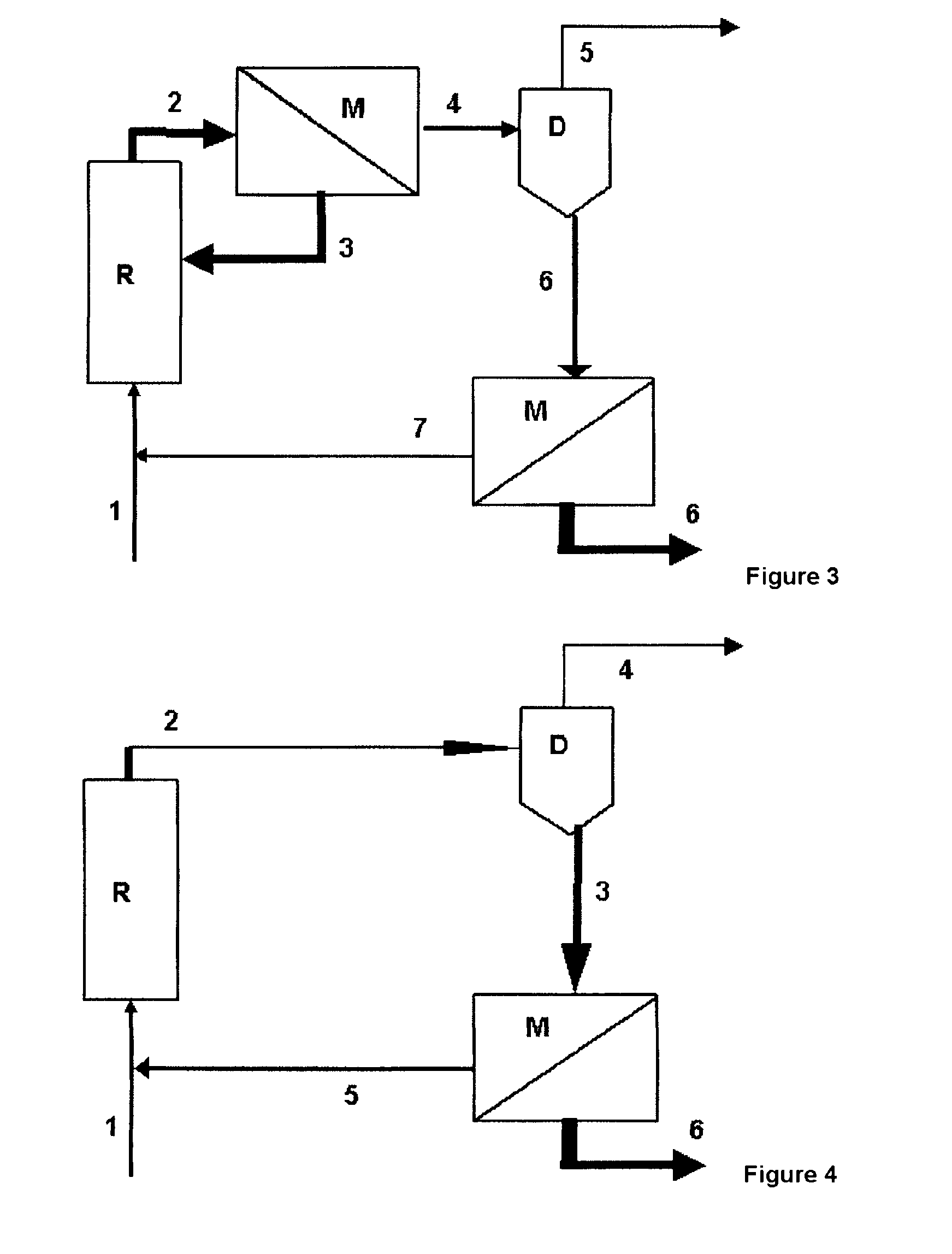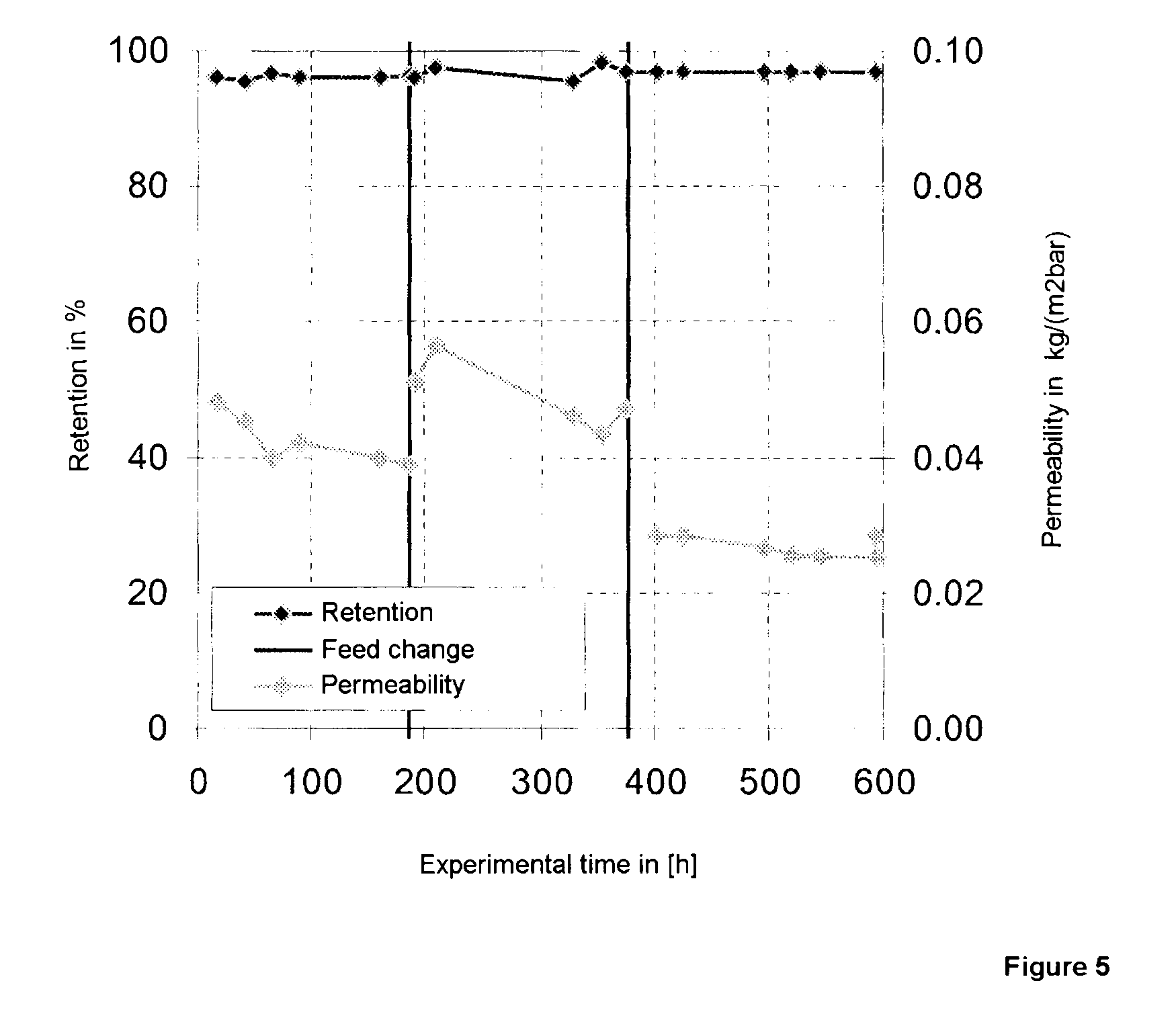Method for enriching a homogeneous catalyst from a process flow
a technology of homogeneous catalyst and process flow, which is applied in the preparation of carbonyl compound, organic compound/hydride/coordination complex catalyst, physical/chemical process catalyst, etc., can solve the problem of catalyst and/or ligand decomposition during distillation, reaction using rhodium complex, and relatively high catalyst cost. , to achieve the effect of high retention
- Summary
- Abstract
- Description
- Claims
- Application Information
AI Technical Summary
Benefits of technology
Problems solved by technology
Method used
Image
Examples
examples
Example According to the Invention
[0096]The separation task as per FIG. 4 which is the most demanding among the above arrangements for the membrane separation step because of the high proportion of high boilers was selected as example. The reaction is a rhodium-phosphite-catalyzed hydroformylation of a dodecene mixture (tri-n-butene). The rhodium precursor used is acetylacetonatodicarbonyl rhodium and the lignad used is a tris(2,4-di-tert-butylphenyl)phosphite. The rhodium concentration was 10 mg / kg. The rhodium to ligand ratio was 20. Reacted starting material such as the aldehyde (isotridecanal) and by-products and subsequent products including high boilers such as aldol condensation products and unreacted starting material and also the catalyst system are fed to a thermal separation step, the bottoms enriched in high boilers and in catalyst from which is fed to the membrane separation step. The proportion of high boilers is above 50%. The molar mass difference between active cata...
PUM
| Property | Measurement | Unit |
|---|---|---|
| temperature | aaaaa | aaaaa |
| transmembrane pressure | aaaaa | aaaaa |
| thickness | aaaaa | aaaaa |
Abstract
Description
Claims
Application Information
 Login to View More
Login to View More - R&D
- Intellectual Property
- Life Sciences
- Materials
- Tech Scout
- Unparalleled Data Quality
- Higher Quality Content
- 60% Fewer Hallucinations
Browse by: Latest US Patents, China's latest patents, Technical Efficacy Thesaurus, Application Domain, Technology Topic, Popular Technical Reports.
© 2025 PatSnap. All rights reserved.Legal|Privacy policy|Modern Slavery Act Transparency Statement|Sitemap|About US| Contact US: help@patsnap.com



